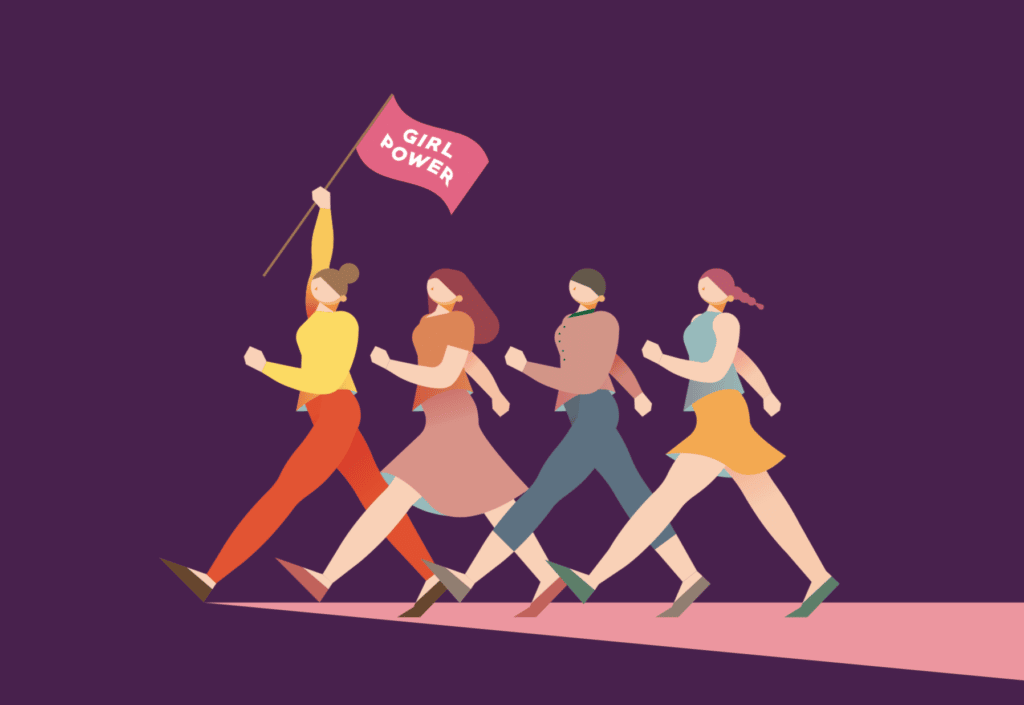This week many paused to mark the tenth anniversary of the International Day of the Girl.
While there had long been an International Women’s Day (and yes, we can, and I have, question the utility of increasingly corporatized IWD celebrations, especially those infamous pink cupcakes!), The United Nations adopted the International Day of the Girl a decade ago to recognise that girls face unique barriers and discrimination simply for being young and female.
A decade on, as many do upon reaching a significant anniversary or milestone, some were inclined to reflect on what, if anything, the last decade of advocacy has delivered by way of change for girls — and what the future might hold for the generation coming of age today.
Sadly, a spate of new reports does not bode well.
Last week, the Australian Bureau of Statistics released the results of the first Time Use Survey conducted since funding for the survey was discontinued by the Abbott government in 2013. The Time Use Survey, it’s worth noting, was re-instated following a long feminist campaign because of the crucial role it plays in measuring the size of the so-called “chores gap”, meaning the gap between the amount of unpaid care and domestic labour men and women in heterosexual relationships do.
The bad news: the gap has barely shifted since 2006, when the last survey was conducted. On average, women spend four hours and 31 minutes a day doing unpaid work activities, while men spend over an hour less on these activities, averaging three hours and 12 minutes a day. At the current rate of change, a girl today is likely to carry the same unpaid domestic load as her mother and her mother’s mother and …. I could go on.
As Angela Jackson, the lead economist at Impact Economics told The Sydney Morning Herald, women are still doing roughly the same amount of unpaid work as they did 16 years ago. “That’s a long time. That’s generational,” she said.
And this is, of course, contributing to the so-called “motherhood penalty”, an umbrella term that encapsulates the myriad of issues that contribute to mothers’ inequality in the workplace, including the “chores gap”, the lack of flexible work or equitable parental leave policies for fathers and mothers to help level that domestic playing field, the lack of access to affordable childcare, and gender-based discrimination, including pregnancy discrimination.
Staying with the “motherhood penalty”, another new report released this week by the Treasury indicates that mums earnings fall by an average of 55 percent in the first five years of parenthood and the penalty persists for at least a decade regardless of a woman’s breadwinner status before having children.
Finally, a new study released by Plan International ahead of the International Day of the Girl showed that Australian girls are increasingly disillusioned with politics, don’t believe politicians have their best interests at heart, and, most disturbingly, don’t even believe political workplaces are safe. Hmmm, I wonder why. But I digress.
According to the report, 60% of Australians girls surveyed disagree with the statement that politicians act in the best interest of girls and 72% do not feel politics is an equal or inclusive space for them, with just 1 in 10 believing Parliament was a safe workplace.
Taken together, all this new research clearly indicates that on this, the 10th anniversary of the International Day of the Girl, we need to redouble our efforts to deliver a fairer future for girls. But they also indicate that we have to transform the message we’ve been sending girls about the road ahead — and the role they themselves will have to play in steering us onto a new, and better, course.
It’s abundantly clear, if it wasn’t already, that it’s time to bin the rah-rah you can do anything #GirlPower mantra that emerged in the nineties and has remained stubbornly dominant since. (Exhibit A: the girls’ T-shirt section at any major retailer.)
In my new book, Leaning Out, I ask: what happens when #GirlPower grows up. Following a decade of stasis on the gender equality front that saw Australia tumble in the World Economic Forum’s Global Gender Gap rankings from 15th when the ranking was first published in 2006 to 50th place last year, many are now inclined to ask what a decade of so-called “empowerment feminism” unleashed in 2003 with the publication of Sheryl Sandberg’s Lean In has really delivered.
For girls, the roots of that “empowerment feminism” go back further to the 1990’s, when #GirlPower was born.
Girl Power was “like” feminism, but it wasn’t really feminism at all. It didn’t interrogate the power dynamics between the sexes. It didn’t examine the structures in which those dynamics operate. It didn’t ask hard questions about privilege, class and race, and who gets to benefit from the “power” part of Girl Power in a deeply classist and racist society — and who doesn’t.
You could be a feminist, but a “friendlier”, less scary version who didn’t hate men, wore make-up and got everything you wanted in life just through moxie and confidence alone.
The Girl Power generation could take the previous generations’ feminist achievements for granted. Was there a great feminist fight for us to embark on collectively? Or were we now, as individual girls, the great feminist project? Yes indeedy, we were.
Equality isn’t inevitable. Girls coming of age today will have to fight for it. Even if they can on occasion “see it”, without radical change on multiple fronts, as the data out this week proves, there’s really no guarantee they’ll “be it”.
It’s time to swap the mantras and merch for real, structural change and empower young women and girls with the information — and the resources – they’ll need to help get us there.
Kristine Ziwica is a regular contributor. She tweets @KZiwica


